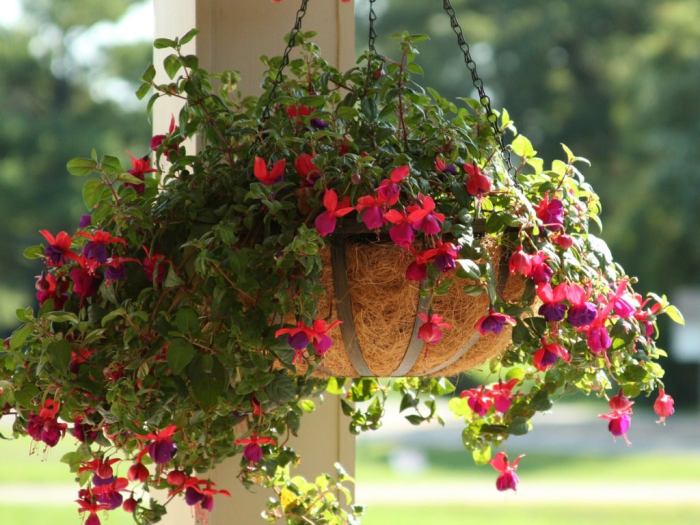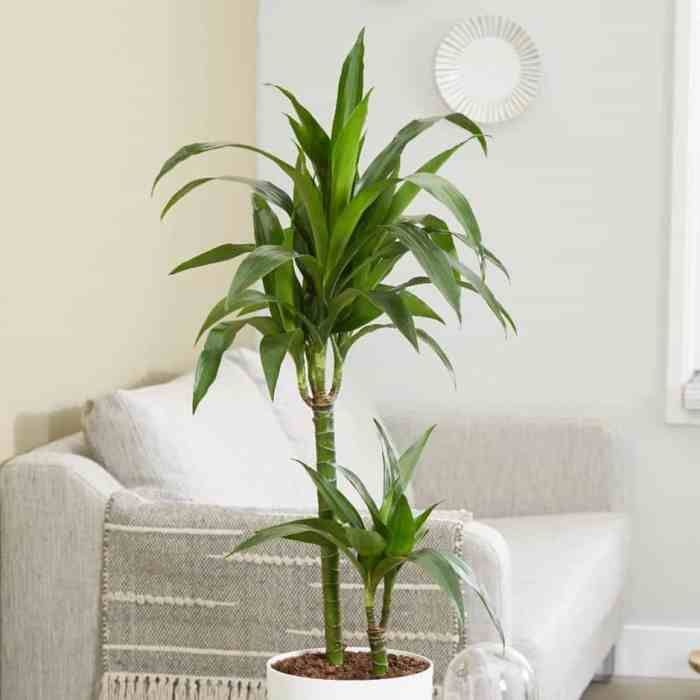Hanging plants that don t need sun – Hanging plants that don’t need sun are a unique and captivating way to bring life to low-light areas. Whether you’re a seasoned plant enthusiast or just starting your indoor garden, these resilient plants offer a vibrant and effortless solution to brighten up your dimly lit spaces.
From cascading pothos to elegant ferns, discover a world of low-maintenance greenery that thrives in the shadows. Our comprehensive guide will provide you with everything you need to know about selecting, caring for, and designing with these extraordinary plants.
Types of Hanging Plants that Don’t Need Sun

Hanging plants that don’t need sun are ideal for dimly lit rooms or areas with limited natural light. These low-maintenance plants add a touch of greenery and freshness to any space, without the hassle of constant sunlight.
Here are some popular hanging plants that thrive in low-light conditions:
Table of Hanging Plants
| Plant Name | Scientific Name | Description |
|---|---|---|
| Spider Plant | Chlorophytum comosum | A fast-growing plant with long, variegated leaves that produce spiderettes (small plantlets) on runners. |
| Pothos | Epipremnum aureum | A vine-like plant with heart-shaped leaves that come in various colors, including green, yellow, and white. |
| Snake Plant | Sansevieria trifasciata | An upright plant with stiff, sword-shaped leaves that have a unique variegated pattern. |
| ZZ Plant | Zamioculcas zamiifolia | A low-growing plant with glossy, dark green leaves that are highly drought-tolerant. |
| Cast Iron Plant | Aspidistra elatior | A hardy plant with dark green, leathery leaves that can withstand low light and neglect. |
Care s for Low-Light Hanging Plants
Hanging plants that don’t need sun, often referred to as low-light hanging plants, have specific care requirements to thrive in indoor environments with limited natural light. These plants require careful attention to watering, fertilizing, and humidity levels to ensure optimal growth and health.
Proper care for low-light hanging plants includes:
Watering
- Water when the top inch of soil feels dry to the touch.
- Avoid overwatering, as this can lead to root rot.
- Allow excess water to drain from the pot before returning it to its hanger.
Fertilizing
- Fertilize every two to three months during the growing season with a balanced liquid fertilizer diluted to half strength.
- Avoid fertilizing during the winter months when plants are dormant.
Humidity
- Low-light hanging plants prefer higher humidity levels.
- Mist the plants regularly with water or use a humidifier to increase humidity around them.
- Placing plants on a tray filled with pebbles and water can also help raise humidity levels.
Designing with Hanging Plants in Low-Light Spaces
Incorporating hanging plants into low-light rooms can add a touch of greenery and freshness to any space. Here are a few tips to help you create a lush and inviting atmosphere:
Choose the right plants: Not all plants can thrive in low-light conditions, so it’s important to choose varieties that are well-suited to these environments. Some good options include pothos, snake plants, spider plants, and ZZ plants.
Maximize Natural Light
Place your hanging plants near windows or other sources of natural light. Even indirect light can help them thrive. If possible, rotate your plants regularly to ensure that they receive even light exposure.
Use Artificial Light
If natural light is limited, you can supplement it with artificial light. Use grow lights specifically designed for plants, and place them close to the foliage to provide adequate illumination.
Create Vertical Gardens
Hanging plants can be used to create vertical gardens, which are a great way to add greenery to small spaces or rooms with limited floor space. Use a variety of plants with different textures and colors to create a visually appealing display.
Consider the Container
The type of container you choose for your hanging plants can also affect their growth. Choose containers with drainage holes to prevent waterlogging, and consider using self-watering planters to ensure your plants receive consistent moisture.
Troubleshooting Common Issues
When growing hanging plants in low light, certain problems can arise. Here’s how to identify and resolve them:
- Yellowing leaves:Low light can hinder photosynthesis, leading to a lack of chlorophyll and yellowing leaves. Move the plant to a brighter spot or supplement with artificial light.
- Leggy growth:Plants stretch towards light when it’s insufficient, resulting in leggy, weak stems. Increase light exposure or consider pruning to encourage bushier growth.
- Root rot:Overwatering in low-light conditions can lead to root rot. Allow the soil to dry out between waterings and ensure good drainage.
- Pests:Low light can attract pests that thrive in damp, shaded areas. Regularly inspect plants and use appropriate pest control measures if necessary.
- Slow growth:Low light slows down plant metabolism and growth. Supplement with artificial light or move the plant to a brighter location to promote healthy growth.
Inspiration Gallery: Hanging Plants That Don T Need Sun

This gallery showcases the diverse beauty of hanging plants that thrive in low-light environments. Explore these captivating images and draw inspiration for your own indoor oasis.
Each image is accompanied by a caption providing the plant’s name and a brief description of its unique characteristics and care requirements.
Even without direct sunlight, hanging plants can thrive in your home. To ensure optimal growth, consider investing in hanging plant light . These lights provide the necessary illumination for your low-light-tolerant plants, mimicking natural sunlight. By incorporating hanging plant light into your indoor gardening routine, you can enjoy the beauty and benefits of hanging plants without compromising their health.
Plant Gallery, Hanging plants that don t need sun
-
Spider Plant (Chlorophytum comosum)
Even in dimly lit spaces, you can add a touch of greenery with hanging plants that don’t need sun. For a more durable and low-maintenance option, consider artificial hanging plants indoor . They offer the same aesthetic appeal without the hassle of watering or sunlight requirements.
These faux plants can effortlessly enhance the ambiance of any room, adding a touch of nature even in the absence of direct sunlight.
This graceful plant features long, arching leaves with variegated patterns. It produces plantlets (baby spiders) that can be easily propagated.
-
Snake Plant (Sansevieria trifasciata)
Known for its resilience and low-maintenance nature, the snake plant has stiff, upright leaves with bold patterns. It tolerates drought well.
-
ZZ Plant (Zamioculcas zamiifolia)
The ZZ plant is a popular choice for its glossy, emerald-green leaves. It is extremely tolerant of neglect and can survive in very low light conditions.
-
Pothos (Epipremnum aureum)
This trailing plant has heart-shaped leaves with vibrant variegation. It is known for its ability to purify the air and is easy to propagate.
-
Peace Lily (Spathiphyllum wallisii)
The peace lily adds a touch of elegance with its glossy, dark green leaves and white, trumpet-shaped flowers. It prefers slightly brighter low-light conditions.
Summary

With hanging plants that don’t need sun, you can transform even the darkest corners of your home into lush and inviting oases. Embrace the beauty of these low-light wonders and enjoy the benefits of greenery without the hassle of constant sunlight.
Let your indoor garden flourish with these remarkable plants, creating a tranquil and refreshing ambiance that will enhance your living space for years to come.
FAQ Section
What are some popular hanging plants that don’t need sun?
Some popular hanging plants that thrive in low-light conditions include pothos, spider plants, philodendrons, ferns, and ZZ plants.
How often should I water hanging plants that don’t need sun?
Water these plants only when the soil is completely dry to the touch. Overwatering can lead to root rot.
Can I use artificial light to supplement natural light for these plants?
Yes, you can use artificial light, such as grow lights, to provide additional light for these plants, especially during the winter months.